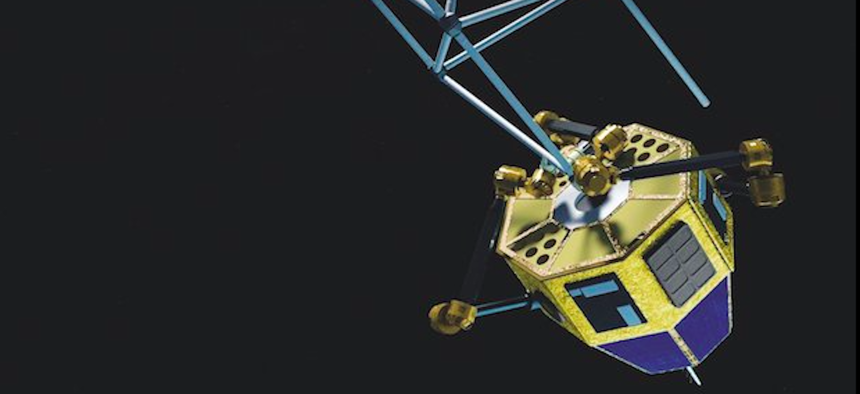
Concept art for the Archinaut 3d printing satellite from MADE IN SPACE / REDWIRE MADE IN SPACE / REDWIRE
Space Force Eyes Orbiting 3D Printers, Satellite Tow Trucks
Instead of lifting heavier satellites into space, new technologies might expand their abilities on orbit.
The hardest thing about space is getting there. A 2016 estimate, using the SpaceX Dragon capsule on a Falcon 9 rocket, put the cost at $9,100 per pound. So the Pentagon is looking at ways to reduce the bill, including putting 3D printers into orbit to repair smaller satellites or even beef up their capabilities, the vice commander of the Space Force said in a recent interview.
“You know, perhaps going forward that’s something that a Space Force might want to exploit as a service procured from someone in the very near future,” Lt. Gen. Dave Thompson said Oct. 1. He cautioned that his comments were to be taken more as speculation about “what the future might look like.”
That future might be built by companies like Redwire, which in June acquired Made in Space, which put a 3D printer aboard the International Space Station in 2014.
You might think that 3D printing on a space station is as easy as it is on Earth. But don’t underestimate the role that gravity plays. “There’s an entire engineering within an engineering process that has to take place,” said Austin Jordan, a communications manager at Redwire. “There are a lot of environmental factors and a lot of gravity factors that make it completely different.”
The group has a $73 million NASA contract to build another 3D printer for launch in 2022. Dubbed Archinaut One, it’s about the size of a dorm room refrigerator. “In six years, we’ve gone from a 3D box on the [International Space Station] to a self-assembling satellite project for NASA,” Jordan said. It all could lead to building satellite parts in space, including antennas that could increase the capabilities of small satellites for communication.
“One of the capabilities they want to achieve... is increased processing on orbit but processing takes power,” said Redwire CEO Peter Cannito. “You could use 3D printing on orbit…to take these small satellites that comprise the architecture, give them much more capability.”
The Defense Department is already funding projects for on-orbit servicing through DARPA, but that program doesn’t use 3D printing.
“We put large satellites out there because you want to increase either your communications capacity or your [radio frequency] collection capacity, “ Cannito said. “It’s all a function of antenna aperture right? But the ability to 3D-print antennas on orbit, associated with a much smaller package and payload, a much smaller bus, that would allow you to deploy powerful communications architectures using much smaller packages.”
Thompson said Space Force also sees a need for robotic orbiting vehicles that can move satellites from one orbit to another, possibly as part of a defensive strategy to make them harder for adversaries to target. “Is there an on-orbit tug that can move a satellite from one orbit to another, do refueling? If in fact a satellite had a failure of its own in an attitude control system or is approaching end of life, can a...provider come in and provide that stability?” he asked.




